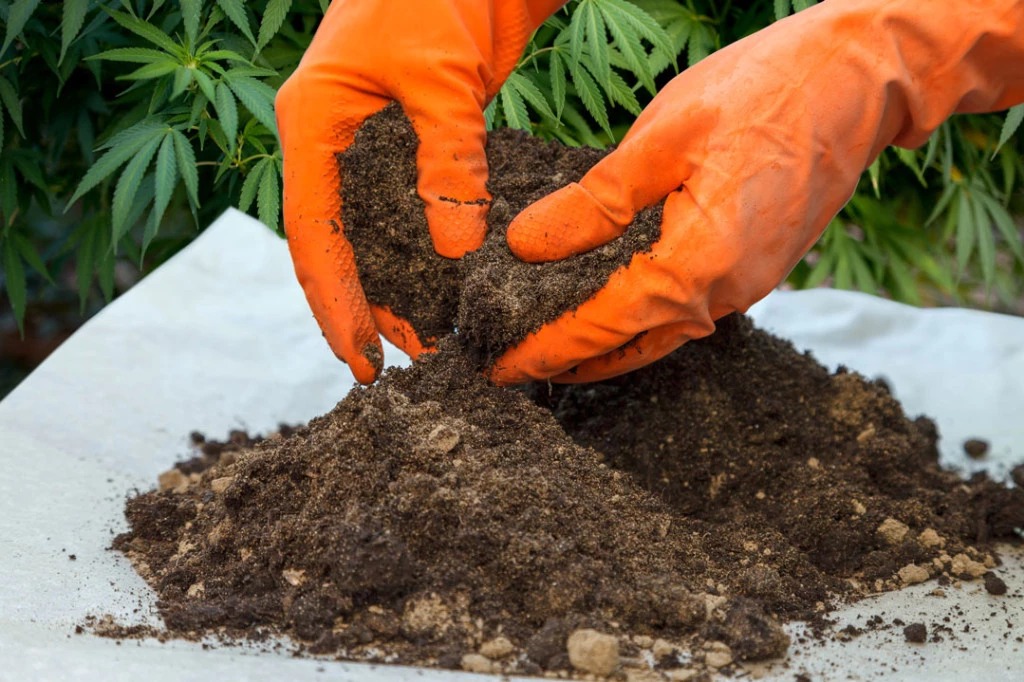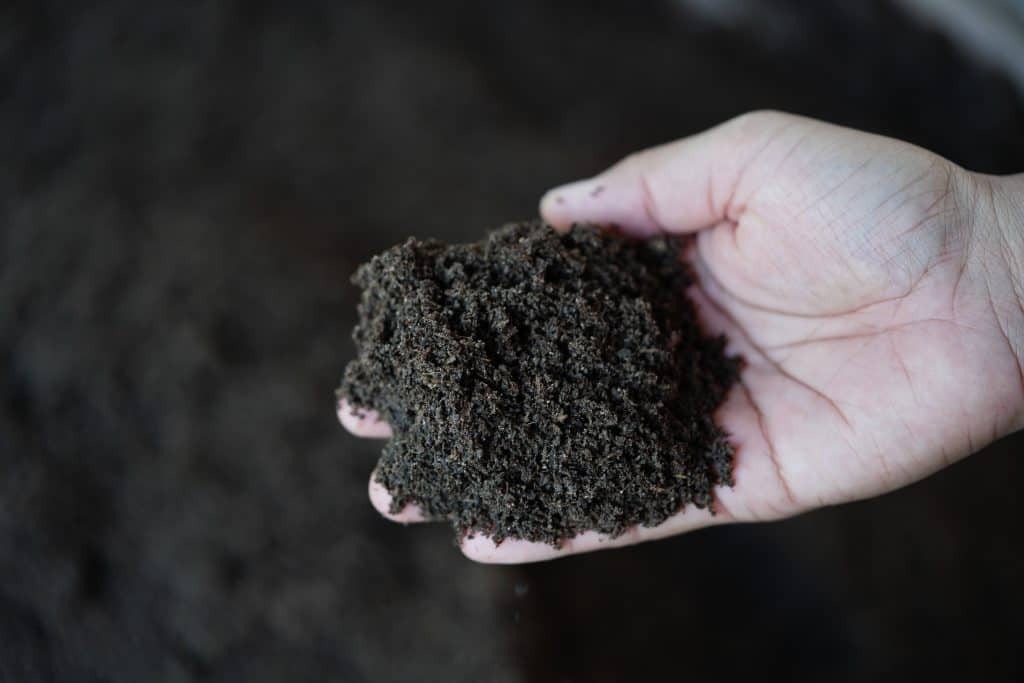The soil in which cannabis is cultivated plays a crucial role in the overall health of the plant, which, in turn, influences the flavor, aroma, and potency of the cannabis strain. Soil affects the plant’s ability to absorb nutrients, the amount of water retained, and the way the roots interact with the environment. Understanding how soil type impacts cannabis cultivation can help growers make informed decisions to optimize the growth and quality of their cannabis plants. In this post, we’ll explore various soil types and how they influence the flavor and potency of cannabis strains.
The Importance of Soil in Cannabis Cultivation
Cannabis plants, like all crops, require a balanced mix of nutrients, water, and air for healthy growth. The soil acts as a medium for these essential elements, but not all soil types offer the same benefits. The soil’s structure, composition, pH, and drainage capacity can drastically alter how a cannabis plant grows, which ultimately impacts its cannabinoid content and the flavor profile of the strain. By understanding these factors, cultivators can adjust their growing practices to match the needs of their chosen cannabis strains.

Soil Composition and Nutrients
Cannabis plants need a variety of nutrients to thrive, including nitrogen (N), phosphorus (P), potassium (K), calcium (Ca), and magnesium (Mg). These nutrients are found in varying concentrations in different types of soil. The presence or absence of specific nutrients can influence plant development, from leaf growth to flower production. For instance, soils rich in nitrogen promote lush green growth, while soils higher in phosphorus help to enhance bud development. Potassium plays a significant role in overall plant health and stress resistance, which can also influence the potency and resilience of the plant.
Different soils offer various nutrient profiles, so the choice of soil is critical in tailoring the right conditions for cultivating cannabis strains that produce the desired flavor, potency, and yield.
Common Soil Types and Their Impact on Cannabis
Cannabis can be grown in various soil types, each with unique characteristics. The most common soil types used for cannabis cultivation include loamy soil, sandy soil, clay soil, and peat-based soils. Let’s dive into how these soil types affect cannabis cultivation.
Loamy Soil: The Ideal Soil for Cannabis Growth
Loamy soil is considered the best soil for growing cannabis due to its ideal balance of sand, silt, and clay. It offers a good mix of drainage, moisture retention, and aeration. The texture of loamy soil allows roots to grow easily while providing a rich environment for nutrient absorption.
Impact on Flavor and Potency
Loamy soil’s balanced nature promotes healthy cannabis growth by allowing the roots to access both oxygen and water. This encourages the plant to focus on strong, healthy bud production. Because of its ability to retain moisture without becoming waterlogged, loamy soil supports consistent nutrient uptake, leading to robust flavor profiles and potent cannabinoids in the final product.
Cannabis strains grown in loamy soil are often characterized by their rich terpene profiles, which contribute to the unique aroma and taste of the buds. Additionally, the balanced nutrient availability ensures that plants are neither too stressed nor over-fertilized, allowing the cannabinoids like THC and CBD to reach their full potential.
Sandy Soil: Light and Well-Draining but Nutrient-Deficient
Sandy soil is known for its excellent drainage properties. It consists primarily of sand particles and doesn’t hold water well, which can be both a benefit and a disadvantage depending on the growing environment. While this type of soil ensures that excess water does not stagnate around the plant roots, it can also result in the soil quickly losing nutrients.
Impact on Flavor and Potency
Cannabis plants grown in sandy soil often face nutrient deficiencies, especially in terms of nitrogen and phosphorus. As a result, these plants may struggle to reach their full potential in terms of size and bud production. Although sandy soil offers good drainage, it may require supplemental feeding to ensure plants are getting the right nutrients at the right time.
When it comes to flavor, cannabis plants in sandy soil may produce milder and less complex terpenes due to the potential lack of essential nutrients. The potency of the buds may also be compromised if the plant is not able to fully develop because of nutrient stress.
Clay Soil: Rich in Nutrients but Prone to Compaction
Clay soil is dense, sticky, and nutrient-rich. It retains moisture well, but this can lead to poor drainage and the risk of overwatering. The compact nature of clay soil makes it harder for roots to expand freely, which can limit the plant’s growth potential. However, with proper amendments to improve drainage and aeration, clay soil can be made suitable for cannabis cultivation.
Impact on Flavor and Potency
Clay soil can provide a rich source of nutrients that support healthy plant growth, especially in the vegetative stage. However, if drainage is not properly managed, the roots may become waterlogged, leading to root rot and overall plant stress. This stress can inhibit cannabinoid production and negatively affect both the flavor and potency of the strain.
In terms of flavor, cannabis strains grown in poorly-draining clay soil may have less aromatic terpenes due to stress-related factors. However, with careful management, clay soil can produce healthy plants with a good flavor profile, particularly for strains that require heavy feeding.
Peat-Based Soil: Moisture-Retentive but Potentially Acidic
Peat-based soils are commonly used in cannabis cultivation due to their moisture-retention properties. These soils, made primarily from decomposed plant material, can hold a large amount of water, making them ideal for growing cannabis in environments where water retention is a concern.
Impact on Flavor and Potency
The high moisture retention of peat-based soil helps prevent dehydration, which can be crucial in the flowering stage when cannabis plants need consistent hydration to produce dense, resinous buds. However, peat-based soils can also become overly acidic, which may stunt plant growth if not properly adjusted.
The acidity in peat soil can impact the availability of certain nutrients, particularly calcium and magnesium, which are important for cannabis health. This can lead to deficiencies that affect the plant’s flavor and potency. If the soil is too acidic, it can inhibit the uptake of essential minerals, preventing the cannabis strain from reaching its full potential in terms of flavor and potency.
How Soil Affects Cannabinoid and Terpene Production
Cannabis flavor, aroma, and potency are directly tied to the production of cannabinoids like THC and CBD, and terpenes, which provide the plant’s distinctive scent. The composition of the soil plays a vital role in how effectively these compounds are synthesized.
Nutrient Availability and Cannabinoid Production
Cannabis plants rely on a wide variety of nutrients for optimal cannabinoid production. Nitrogen, phosphorus, and potassium are key players, but secondary nutrients like calcium, sulfur, and magnesium also contribute to the overall health of the plant. Soil types with poor nutrient availability can result in underdeveloped buds with lower cannabinoid content. By ensuring the right balance of nutrients in the soil, growers can help increase the potency of their cannabis strains.
Terpene Profiles and Soil’s Influence
Terpenes are volatile compounds that give cannabis its distinct aroma and flavor. Soil composition directly influences the terpene profiles of cannabis strains. For example, soils rich in organic matter often promote the production of more complex terpenes, which contribute to a more flavorful end product. Soil pH, moisture retention, and nutrient levels all influence terpene synthesis, ultimately impacting the final flavor profile of the strain.
Conclusion
The type of soil used in cannabis cultivation significantly impacts the growth, flavor, and potency of the strain. Loamy soil tends to offer the best conditions for producing healthy, potent, and flavorful cannabis plants, while sandy, clay, and peat-based soils each come with their own set of challenges and benefits. By understanding how soil composition affects cannabinoid and terpene production, cultivators can make more informed decisions about which soil type is best suited for their chosen cannabis strains. Ultimately, the right soil can lead to a more robust plant, better flavors, and higher potency, ensuring a successful and enjoyable cultivation process.

